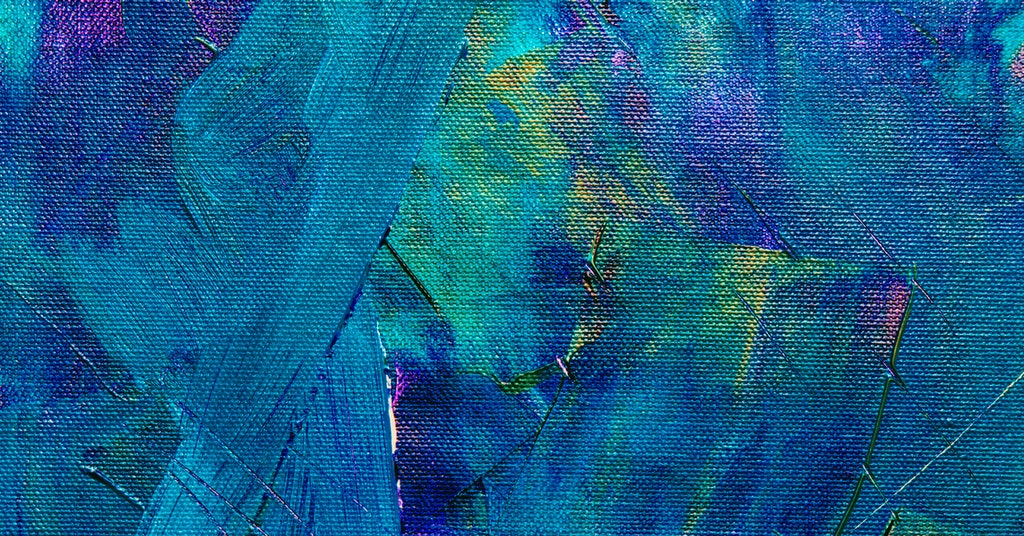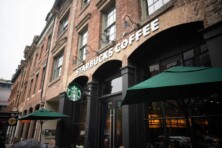NFT art galleries have a great potential of bridging the gap between digital art and real-world consumers. They represent a unique blend of innovation and tradition in the artistic space

NFT art gallery – future of digital artwork. Source: pexels.com
NFT stands for a non-fungible token. Every such token represents a unique digital or physical object. Photos, GIFs, videos, audio files, memes, and even tweets can become an NFT and be publicly traded. The non-fungible blockchain technology became a true revelation in the world of art.
NFTs are a groundbreaking solution for the genuinity issue that’s plagued the art sphere for years. Due to blockchain transparency mechanisms, NFTs provide a unique proof of the artwork ownership by both the artist as the original owner and the ultimate art collector. Moreover, they give artists additional monetisation opportunities. Therefore, their popularity is steadily rising.
NFTs as a peculiar type of virtual art deserve proper display in a physical world too. Therefore, the first bricks-and-mortar NFT art galleries have started popping up across the US, hinting at the new prospects of digital artwork. At the same time, major exhibition houses are developing their own virtual NFT galleries in DApps, giving those artworks unique exposure.
Offline galleries
This year, the media highlighted a few art events that may mark the beginning of a new NFT trend. Physical galleries displaying NFT artworks have opened their doors to visitors in New York, Los Angeles, Miami, Dallas, London, Beijing, and other popular venues. It’s peculiar that those galleries are taking different approaches to presenting digital artworks.
Art exhibitions may become futuristic and highly interactive as long as NFTs are involved. Interactive experiences and VR can greatly enhance appreciation of NFT artworks. For example, Artist Uprising presented a pop-up NFT art gallery at Landmark Center in Dallas, featuring augmented reality experiences along with food & entertainment for the guests. While exhibition visitors could view the artworks dynamically and enjoy an enhanced AR experience, physical prints of those artworks and childrens prints were also auctioned at the show.
Vellum L.A. gallery chose to present NFT art in partnership with StandardVision that designed a museum grade LED Canvas called Luma Canvas. Those are significantly more vibrant than any average TV screen and can support various aspect ratios outside of the traditional HD format. Luma Canvas also has a software component that can display programmable art. It allows the display of art that can change over the course of hours, days, months, or even years.
Even though many NFT art galleries look rather traditional, high-resolution screens on the gallery walls that resemble hanging pictures are highly immersive. Thus, Superchief NFT gallery in New York partnered with “digital canvas” specialists Blackdove to show the artwork on super high-resolution 4K screens between 49 to 90-inches. These screens can then be hung in a collector’s home after the purchase. This model of digital art presentation and ownership may add value and attract public attention to the NFT concept. Some art collectors who see no point in buying a .jpg file, will be more willing to decorate their walls with the physical representation of NFT artworks.
At the Dream Hollywood hotel, there’s also a private NFT exhibition. With lofty ceilings and white walls, the space resembles a gallery by design. Numerous works of art have been displayed there. Today, in partnership with the Crypt Gallery, hotel guests will not simply have a passive observer experience. With the NFT exhibition, visitors can take part in live auctions streamed from online NFT marketplaces and join guest-only raffles for limited-edition works.
Online galleries
Meanwhile, online resources are also bridging the gap between the virtual and physical representation of digital art. Displaying NFT masterpieces in a manner of standard marketplaces makes it more of a commodity than an object of art. Therefore, online platforms try to recreate the atmosphere of traditional art galleries in a digital environment. Of course, such exhibits may take an innovative twist.
For example, the new Strata Gallery Platform launched its first interactive, digital art experience called Whole Picture. Based on the physical paintings of one of Mexico’s leading conceptual artists, Hector Falcon, the project participants co-created 1200 multi-layer NFT artworks through a combination of choice and chance. Technically, it was possible via the integration with the Chainlink Verifiable Random Function (VRF) — the blockchain industry’s leading secure and auditable random number generator. The project is a virtual continuation of Falcon’s renowned work, Constructive Modular Extraction, where Héctor slashes through his own canvases to reveal the images that lie beneath.
When the event ended, the co-creation of new pieces stopped. However, there are still randomisation opportunities. NFTs for sale consist of 4 randomly selected canvases. You can interact with them to reposition the 4 canvases that make up each artwork. Fifty framed canvas cut-outs, signed by Hector, will be also allocated to NFT holders in the course of the event. The ambitious Strata Gallery is already planning new artist collaborations.
Another illustration is the virtual art gallery solution Spatial. Many artists and NFT collectors use the platform to host their private ateliers. The web version works both with and without VR headsets. It has MetaMask Integration, Pedestals, Frames, default and customised Gallery environments, and a descriptive caption panel for art. The solution is not unique. There are many other projects allowing you to showcase your NFT collection in a gallery environment, adding a purchase link to it.
Many NFT Art collectors have also taken their precious assets to blockchain-based virtual worlds like Decentraland and Cryptovoxels. Those platforms make it possible to build NFT galleries online. The NFT Art marketplaces themselves (i.e. SuperRare, MakersPlace, KnownOrigin, Async.art) also have a gallery presence within the Metaverse.
Even Sotheby’s has created a digital replica of its London galleries in Decentraland. An auctioneer in a top hat greets people at the virtual Sotheby’s door, flanked by a CryptoPunk avatar and McCoy’s Quantum. The JPGs and MP4s are placed in black frames, as photographs would be installed, so they don’t just cling to the walls as art often does in Decentraland’s exhibitions.
Berlin’s König Galerie also launched a space in Decentraland in March with the exhibition “The Artist Is Online,” as part of a new digital art program. This virtual gallery was designed by artist Manuel Rossner as a replica of Berlin’s König physical gallery space in the old church building. Digital VR sculptures look outstanding in this environment.
To join the trend, Francisco Carolinum in Linz, Austria, bought plots of land in Cryptovoxels and built a tower there. This tower is used as a virtual counterpart to its physical exhibition “Proof of Art: A Brief History of NFTs”. This tall, narrow space, with floors connected by floating staircases, is packed with works by NFT artists.
This May, Todd Morley, co-founder of Guggenheim Partners, announced the plans to open the world’s largest NFT museum in New York. Morley invested in the development of a blockchain network tower that will be New York’s tallest building. In addition to providing a platform for the exhibition of NFT artworks, the tower would theoretically give anyone in New York the power to seamlessly access wireless crypto trading and serve as a centralised hub for blockchain technology advancements. The project is a joint venture between Morley’s Overline and real estate developer JDS Group, and is set to begin by the end of the year.
Meanwhile, the platform called Virtually World opens its own virtual NFT art museum Crypt. The Crypt will collect, curate and showcase collectables across art, literature, music, photography, sculpture and digital media. This virtual museum features an atrium, spiral staircase and skylight. Works of art and exhibitions are available to view for free, and visitors can walk around the virtual space from wherever they are. The virtual attraction is accessible on browsers and mobiles, and is coming soon to VR headsets. Group visits are enabled via private invitation links, with voice chat available.
SEE ALSO:









